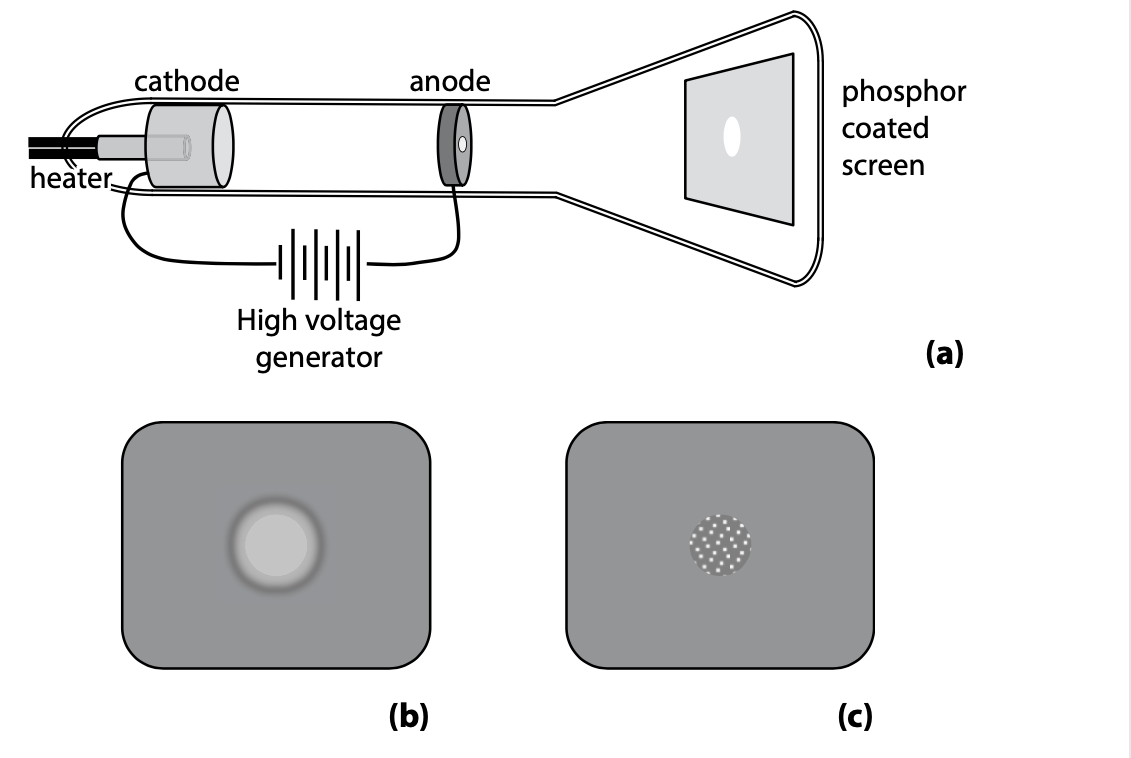Physics Lournal
Powered by 🌱Roam GardenExperiment One - The Cathode Ray Tube
The two ends of a battery are termed electrodes, with the positive end being the anode, and the negative end being the cathode.
A cathode ray tube consists of wires, ran from these electrodes, to conductive plates, with an aperture in the anode, beyond which is placed a phosphor coated screen, at the end of a vacuum tube, encasing the rest of the device, save for the conductive plates, with a controllable heating element attached to the cathode.
Within this experiment, we warm up the heating element, and when the cathode becomes hot enough, a bright circle, corresponding to the shape of the aperture, appears on the phospor screen.
If we turn down the heating element, eventually, we no longer get a spot, but a pattern of "dots" on the screen, appearing one at a time, with a signifcant distance between them, but tracing out the original region, over time.
